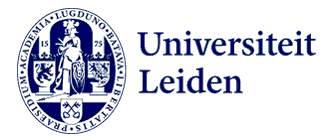Heritabilitas Produki Telur Ayam Lokal Papua Berbeda Genotip dari Lokus 24- bp Insertion-Deletion dalam Promotor Gen Prolaktin
Heritability of Egg Production in Papua Local Chickens Different Genotypes of 24- bp Insertion-Deletion Locus in Promotor Prolactin Gene
DOI:
https://doi.org/10.46549/jipvet.v11i2.161Keywords:
heritability, genotype of 24-bp_cPRLp locus, first-egg-laying, egg-number, egg-weight.Abstract
The heritability (h2) of a trait shows phenotypes variance of the trait caused by additive genetic variance. The h2 value is used to estimate the quantitative trait breeding value of livestock in order to improve these traits through selection. This study aims to estimate the h2 of egg production characteristics in Papua local chickens with different genotypes from the 24-bp InDel (Insertion-Deletion) locus in the prolactin gene promoter region (24-bp InDel/cPRLp locus). A total of 13 pairs of Papua local chickens consisting of 3 pairs of II genotypes (♂II x ♀II) and 11 female offspring, 5 pairs of ID genotypes (♂ID x ♂ID) and 19 female offspring, and 5 pairs of DD genotypes (DD x ♀DD) and 17 female offspring were used in this study. Observations were made on the characteristics of egg production in female offspring of each genotype group. The variance component for h2 estimation is obtained by the one-way analysis of variance method and the separation of the variance components for single pairs. The results showed that the h2 at first laying of eggs in all genotype groups was moderate (0.10 to 0.30); the h2 of the number of eggs produced from the time they first laid eggs until the age of 240 days in II and ID genotype groups was high (> 0.3), while in the DD genotype group was classified as moderate (0.10 to 0.30); and the h2 of egg weight in all genotype groups was moderate (0.10 to 0.30). The high h2 of a trait indicates that the trait is more dominated by additive genes and is more responsive to the selection treatment.
Downloads
References
Becker, 1975. Manual of Quantitative Genetics. 4th Ed. Acdemic Enterprises, Pullman, Washington.
Cui, J.X., H.L. Du, Y. Liang, X.M. Deng, N. Li, and X.Q. Zhang. 2006. Association of polymorphism in the promoter region of chicken prolactin with egg production. Poultry Science, 85:26-31.
Dalton, D.C.1980. An Introduction to Practical Animal Breeding. 2th ed. Granada, London.
Dana, N., E. H.V. Waaij, J.A.M.V. Arendonk. 2011. Genetic and phenotypic parameter estimates for body weights and egg production in Horro chicken of Ethiopia. Trop Anim Health Prod, 43:21–28
Gwaza, D.S., NI. Dim, and OM. Momoh. 2016. Genetic Improvement of Egg Production Traits by Direct and Indirect Selection of Egg Traits in Nigerian Local Chickens. Adv Genet Eng 2016, 5(2):1-7.
Hardjosubroto, W. dan J.M.Astuti. 1993. Buku Pintar Peternakan PT.Gramedia Widiasarana Indonesia, Jakarta.
Hardjosubroto, W. 1994. Aplikasi Pemuliabiakan Ternak di Lapangan. Penerbit PT. Gramedia Widiasarana Indonesia, Jakarta.
Kamali, M.A., Ghorbani, S.H., Moradi Sharbabak, M. and Zamiri, M.J. 2007. Heritabilities and genetic correlations of economic traits in Iranian native fowl and estimated genetic trend and inbreeding coefficients, British Poultry Science, 48(4): 443–448
Kilmaskossu, A. 2010. Komunikasi Pribadi.
Lasley.J.F.1978. Genetics of Livestock. Prentice Hall Inc, Englewood Cliffs, New Yersey.
Lwelamira, J., Kifaro, G.C. and Gwakisa, P. S. 2009. Genetic parameters for body weights, egg traits and antibody response against Newcastle Disease Virus (NDV) vaccine among two Tanzania chicken ecotypes, Tropical Animal Health and Production, 41, 51–59
Miao, Y., D.W. Burt, I.R. paton, P.J. Sharp, and I.C. Dunn. 1999. Mapping of the prolactin gene to chicken chromosome 2. Anim Genet. 30: 473.
Mu’in, M.A. and S. Lumatauw. 2019. Potency of papua local chickens as egg producers: a molecular review. IOP Conf. Series: Earth and Environmental Science 247.
Sabri, H.M., H.R. Wilson, R.H. Harms and C.J. Wilcox. 1999. Genetic parameters for egg and related characteristics of White Leghorn hens in a subtropical environment. Genetics and Molecular Biology, 22 (2): 183-186.
Sang, B., Kong, H.S., Kyukim, H., Choi, C.H., Kim, S.D., Cho, Y.M., Sang, B.C., Lee, J.H., Jeon, G.J. and Lee, H.K. 2006. Estimation of genetic parameters for economic traits in Korean native chickens, Asian-Australasian Journal of Animal Sciences, 19(3): 319–323
Sharp, P.J., M.C. MacNamee, R.T. Talbot, R.J. Sterling, and T.R. Hall. 1984. Aspects of the neuroendocrine control of ovulation and broodiness in the domestic hen. J. Exp. Zool. 232.475-483.
Shimada, K.I.H., K. Sato, H. Seo, and N. Matsui.1991. Expression of prolactin gene in incubating hens. Reprod. Fertil. 91:147-154.
Singh, M.K., S. Kumar, R.K. Sharma, S.K. Singh, B. Singg and D.V. Singh. 2018. Heritability estimates of adult body weight and egg production traits in indigenous Uttara chickens. International Journal of Genetics, 10(2): 357-359.
Van Vleck, L.D., E.J. Pollak and E.A.B. Oltnacu. 1987. Genetics for the Animal Science. W.H. Freeman and Company, New York.
Warwick, E.J.,J.M.Astuti dan W. Hardjosubroto. 1995. Pemuliaan Ternak. Gadjah Mada University Press, Yogyakarta.
Zhang, L.C., Z.H. Ning, G.Y. Xu, Z.C. Hou and N. Yang. 2005. Heritabilities ang genetics and phenotypic correlation of egg quality traits in brown-egg dwarf layers. Poul.Sci. 84(8):1209-1212.
Downloads
Published
How to Cite
Issue
Section
License
License and Copyright Agreement
In submitting the manuscript to the journal, the authors certify that:
- They are authorized by their co-authors to enter into these arrangements.
- The work described has not been formally published before, except in the form of an abstract or as part of a published lecture, review, thesis, or overlay journal. Please also carefully read Jurnal Ilmu Peternakan dan Veteriner Tropis (Journal of Tropical Animal and Veterinary Science) Posting Your Article Policy at https://journal.fapetunipa.ac.id/index.php/JIPVET/publicationethics
- That it is not under consideration for publication elsewhere,
- That its publication has been approved by all the author(s) and by the responsible authorities “tacitly or explicitly“ of the institutes where the work has been carried out.
- They secure the right to reproduce any material that has already been published or copyrighted elsewhere.
- They agree to the following license and copyright agreement.
Copyright
Authors who publish with Jurnal Ilmu Peternakan dan Veteriner Tropis (Journal of Tropical Animal and Veterinary Science) agree to the following terms:
- Authors retain copyright and grant the journal right of first publication with the work simultaneously licensed under a Creative Commons Attribution License (CC BY-NC-SA 4.0) that allows others to share the work with an acknowledgment of the work's authorship and initial publication in this journal.
- Authors are able to enter into separate, additional contractual arrangements for the non-exclusive distribution of the journal's published version of the work (e.g., post it to an institutional repository or publish it in a book), with an acknowledgment of its initial publication in this journal.
- Authors are permitted and encouraged to post their work online (e.g., in institutional repositories or on their website) prior to and during the submission process, as it can lead to productive exchanges, as well as earlier and greater citation of published work.

This work is licensed under a Creative Commons Attribution-NonCommercial-ShareAlike 4.0 International License.

























.png)
